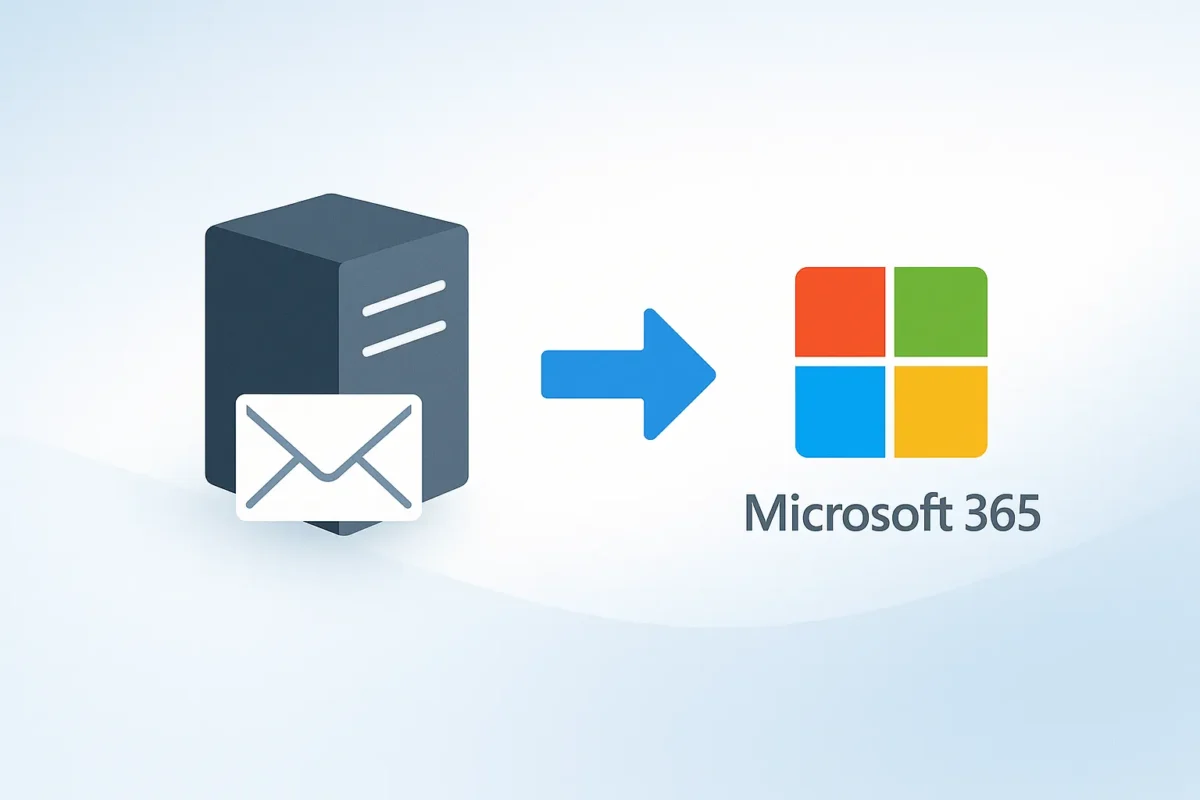Why so many companies are moving from Google Workspace to Microsoft 365 (2025): costs, security, AI, and productivity
A clear guide to understand why organizations of all sizes are switching from Google Workspace to Microsoft 365: from Total Cost of Ownership (TCO) and built-in security to generative AI (Copilot vs. Gemini), data governance and sovereignty, telephony and collaboration, and device management. Includes market trends, practical comparisons, and a 6-phase migration plan with common pitfalls to avoid.
Thinking about migrating from Google Workspace to Microsoft 365 with less risk and more value?
At MSAdvance we combine migration playbooks, automation, and security landing zones so the change is measurable and reversible.
Executive summary — 7 business reasons
The decision to migrate rarely comes down to a single factor. We see it as a combination of value levers that together justify the change: savings through tool consolidation, a stronger security posture, better compliance controls, integrated analytics and BI, and now generative AI embedded in the workflows where people spend their hours.
- Total cost and consolidation: with Microsoft 365 E3/E5 many companies replace point solutions (secure mail, EDR/XDR, DLP, BI, cloud PBX) with a unified bundle.
- End-to-end integrated security: E5 adds Defender (mail, endpoint, identity), Purview (labels, DLP, retention, eDiscovery) and auditing controls.
- Powerful desktop apps: Excel for complex models (macros, Power Query/Pivot) and large files; mature Word/PowerPoint/Outlook.
- AI for work: Copilot for Microsoft 365 in Word, Excel, Outlook and Teams; alternative: Gemini in Gmail/Docs/Meet.
- Collaboration and voice: Teams + Teams Phone consolidate chat, meetings, and cloud PBX.
- Device management: Intune and Zero Trust policies versus Google’s lighter-weight approach.
- EU data residency: EU Data Boundary completed; on Google, Data Regions (including support for Gemini in 2025).
Market signals and trends
Okta’s annual reports (Businesses at Work 2025) show Microsoft 365 and Google Workspace as dominant, growing suites, with security and collaboration as the categories strengthening the most. Meanwhile, communications unification is accelerating: Microsoft Teams remains a UCaaS benchmark, which fuels consolidation projects for chat, meetings, and telephony.
Practical translation: more CIOs are evaluating the convergence of productivity, security, and communications around a primary provider, trimming contracts and simplifying support.
Productivity — Office vs. Google Docs (what really happens day-to-day)
Excel remains pivotal in finance, operations, and FP&A: it handles up to 1,048,576 rows × 16,384 columns per sheet, integrates Power Query/Power Pivot, and supports VBA macros. Google Sheets excels at real-time collaboration, but it has a 10-million-cell limit per file; for large-scale models, that ceiling matters.
In co-authoring, both ecosystems shine, but power users value having a desktop client + cloud: open a heavy workbook locally, edit it with native performance, and save to OneDrive/SharePoint with autosave. That hybrid pattern (desktop + cloud) is where Office & Teams make the difference for many organizations.
In addition, choosing E5 adds Power BI Pro (within Office 365 E5), which can reduce BI costs if you’re currently paying separately for an analytics tool.
Security & compliance — Purview & Defender vs. Google Security & Vault
Security posture is often the decisive factor. With Microsoft 365 E5 you unify layers: identity (Entra ID P2), email protection (Defender for Office 365), endpoint (Defender for Endpoint), threat intelligence, SIEM/SOAR (Microsoft Defender XDR & Sentinel, depending on licensing), and information governance with Microsoft Purview (labels, DLP, retention, and eDiscovery Premium).
In Google Workspace, Google Vault covers retention and eDiscovery for Gmail/Drive/Chat/Meet; the native Security Center and DLP provide valuable controls. Still, if your strategy is to consolidate cybersecurity into a single bundle, E5 typically covers more fronts “out of the box” (especially advanced auditing, Insider Risk, sensitive data on endpoints, and unified governance with Purview).
AI at the workplace — Copilot vs. Gemini (what changes when you migrate)
Copilot for Microsoft 365 brings AI into Word, Excel, PowerPoint, Outlook, and Teams, with licensing starting at USD 30/user/month (on top of eligible base licenses). Its advantage is secure context from your Microsoft Graph: emails, documents, meetings, and chats become actionable knowledge under your Purview labels and policies.
Gemini for Workspace integrates with Gmail/Docs/Meet and has reworked legacy add-ons. In 2025 Google enabled Data Regions support for Gemini features, important for customers with residency requirements.
Recommendation: define 3–5 “money-in” use cases (sales, support, finance) and measure time/cost savings vs. licenses. For teams who live in Office, Copilot reduces “context switching” and speeds deliverables; if your company is web-first, Gemini can also gain traction without changing suite.
Collaboration & telephony — Teams, Teams Phone and Meetings vs. Meet and Voice
Microsoft Teams centralizes chat, meetings, files, and cloud telephony (Teams Phone) to replace PBX, with PSTN options like Calling Plans, Operator Connect, or Direct Routing. The official Teams Phone documentation summarizes capabilities (queues, IVRs, recording, certified devices).
In Google Workspace, Meet delivers high-quality meetings and Google Voice provides enterprise telephony (separate licenses). It’s a solid option for “all-Google” environments. The decision usually hinges on which platform will be the work “hub” and whether it’s beneficial to consolidate PBX + collaboration under a single admin pane.
Device management — Intune/Entra vs. Google Endpoint Management
Intune offers mature MDM/MAM for Windows, macOS, iOS/iPadOS, and Android, with granular compliance, updates, and Zero Trust (conditional access, app protection). Docs: What is Intune?. If your fleet is mostly Windows and you already use Microsoft Defender, the synergy reduces operational friction.
Google Endpoint Management shines in BYOD and Android/ChromeOS fleets, and covers iOS/Windows/macOS with different levels depending on edition (overview · help center). For organizations with mixed estates and deep Windows compliance requirements, Intune often provides more control depth.
Data sovereignty and residency in the EU
In February 2025 Microsoft completed the EU Data Boundary, expanding storage and processing within the EU/EFTA for Microsoft 365, Dynamics 365, and Power Platform (including support data). For many European customers, this simplifies international transfer assessments.
Google, for its part, offers Data Regions for Workspace and in 2025 enabled usage with Gemini features in selected regions (announcement). If residency and support localization are critical, this point may tip the scales.
Total cost (TCO) & licensing — when the switch pays off
Beyond the per-user price, TCO includes tools you pay for separately today: email protection, EDR/XDR, DLP/IRM, SIEM/SOAR, BI, telephony, MDM, and now AI. With E5, several of these capabilities are already integrated; plus, Copilot (USD 30/user/month) deploys AI directly across Office/Teams.
Rule of thumb: if you currently pay for Workspace + (secure email) + (EDR) + (DLP) + (cloud PBX) + (BI) + (AI), migrating to Microsoft 365 (E3/E5 + Copilot) often reduces contracts and simplifies support while maintaining or improving your control level.
6-phase migration plan (fast, reversible, and measurable)
- Discovery and pilot: inventory mailboxes, calendars, groups, Shared Drives, apps (AppSheet, integrations), permissions, and retentions. Define pilot personas (sales, finance, IT) and KPIs (response time, complaints, incidents).
- Identity and security: prepare Entra ID (SSO/MFA/conditional), domains and DNS. Plan SPF/DKIM/DMARC with official guides (SPF · DKIM · DMARC). Apply minimum guardrails: sensitivity labels, DLP in “audit” mode, baseline retention policies.
- Mail and calendars: migrate in waves using the official path Google Workspace → Exchange Online or, failing that, IMAP (IMAP guide). Validate cross-tenant free/busy in the pilot and plan the MX cutover outside business hours.
- Files: move Drive/Shared Drives → OneDrive/SharePoint with Migration Manager/Mover (Migration Manager) or SPMT (SPMT). Review permission mapping and the target site/Teams structure before execution.
- Collaboration and telephony: design the information architecture (sites, teams, and channels), meeting/recording policies, and governance. If voice is in scope, plan Teams Phone with Operator Connect/Calling Plans by country and contract.
- Decommissioning and support: leave Workspace in read-only until you close holds in Vault and verify exports. Establish post-go-live support, adoption (short videos, “how to choose a label”), and dashboards for usage/security.
Express checklist: DNS and authentication ready; migration batches defined; Drive→SPO permission mapping; DLP/retention policies in “audit”; voice plan (if applicable); adoption and support in motion.
Common mistakes and how to avoid them
- Underestimating Drive→SharePoint: respect hierarchies and Shared Drives ownership; don’t dump “everything” into a single team. Prepare target sites/Teams before moving.
- Last-minute DNS and authentication: configure SPF/DKIM/DMARC weeks in advance and rehearse the cutover with a test domain.
- Forgetting residency/retentions: if GDPR applies, when moving data review EU Data Boundary vs. Data Regions and align retention/eDiscovery policies.
- AI without business cases: roll out Copilot/Gemini with measurable pilots and usage rules (sensitive data, labeling, auditing).
Quick FAQs
How long does it take to migrate email?
It depends on size, bandwidth, and parallelization. With the migration assistant from Google to Exchange Online you plan waves with pre-stage and a final off-hours cutover.
What happens with Vault and ongoing litigation?
Keep Vault active until you close holds/exports and mirror equivalent retentions in eDiscovery (Premium).
Are there “awkward” spreadsheet limits?
Yes: Google Sheets has a 10M-cell limit per file; Excel supports 1,048,576 × 16,384 and models with macros/Power Query.
How do I migrate Drive/Shared Drives?
Use Migration Manager (Mover) for Google Drive → OneDrive/SharePoint, or evaluate SPMT as needed.
Official resources and guides
- Migrate Gmail/Calendars/Contacts → Exchange Online (Microsoft)
- Migration Manager (Mover) — Drive → OneDrive/SharePoint
- SharePoint Migration Tool (SPMT)
- Copilot for Microsoft 365 — pricing
- Gemini in Google Workspace
- Data Regions in Google Workspace · EU Data Boundary (Microsoft)
- Microsoft Purview eDiscovery — docs · Google Vault — docs
- 10M cell limit in Google Sheets · Excel specifications
- Okta — Businesses at Work 2025
- Teams Phone — capabilities · Operator Connect
- Configure SPF · Configure DKIM · Configure DMARC
Conclusion — consolidate, protect, and enable AI
Companies migrating from Google Workspace to Microsoft 365 typically pursue three goals: cost consolidation (fewer vendors and overlaps), stronger security and compliance posture (E5, Purview, Defender), and activating AI where people already work (Copilot embedded in Office/Teams). With phased execution, adoption metrics, and clear guardrails, the result is a more unified platform with less operational friction and tangible business value.
Want to migrate with guarantees and KPIs?
We design the pilot, execute migration waves, and leave security and data-governance guardrails configured with success dashboards.










